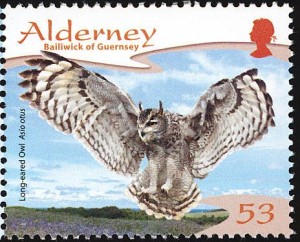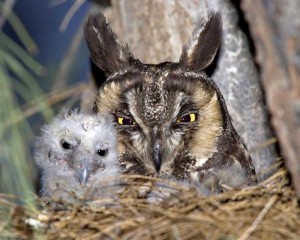Week 46 – 28 May 2017:
With the Best of Intentions
It is comforting to know that the world is full of good people. These are the sort of folk who stop and offer help when they see you puzzling over a street map. Those same people will attempt to assist an ill or injured animal, perhaps by taking it to a veterinary practice or a wildlife rescue centre. This sort of behaviour isn’t about trying to save a species from extinction. It is an attempt to do the right thing for an individual animal in need.
The IUCN considers the Long-eared Owl to be of least conservation concern. Somewhere between 2,000,000 and 5,500,000 mature individuals are spread widely over Asia, Europe, North Africa and parts of North America. There is no reason to believe that they will fall to extinction anytime soon. Even so, there are those who believe that every individual is precious, and will attempt to assist a Long-eared Owl in distress.
Alessia Mariacher of the Istituto Zooprofilattico Sperimentale delle Regioni Lazio e Toscana and her colleagues collected data about admissions of Long-eared Owls to thirteen wildlife rescue centres in Italy. It was their hope that the results of the study would help to illuminate the sources of wildlife morbidity and mortality in the region.
Between 2014 and 2014, 391 live Long-eared Owls were taken into rescue centres for assistance. Almost sixty percent of these were adult birds, and most of those were admitted during the non-breeding season. Not surprisingly, young birds were mainly brought for assistance between April and June. Of those individuals that had suffered trauma from collisions, most were adults. They had likely been struck by automobiles or had hit fences or windows. A disturbingly large number of adults had been shot. Some had been poisoned, possibly through secondary exposure to rodent poisons. Most younger owls were healthy at the time of admission, having been found on the ground or on branches in wooded habitat. Although many of these young birds were almost certainly still under the care of their parents, some were admitted for care in a malnourished or injured state.
Despite the best efforts of personnel at the wildlife care centres, 64% of adults died while in care. This is not an unusual statistic. On a far happier note, 81% of young birds survived the experience. Mariacher and her colleagues reinforced an important message for those who find young birds, apparently abandoned. There are many reasons for a chick to leave its nest including the avoidance of nest parasites and potential predators, and a search for a cooler spot; it may not be abandoned at all. When it comes to owls, “these chicks still depend on their parents for food for the next few months, and may appear helpless by well-meaning passers-by who collect them” wrote Mariacher et al.
If we wanted to know more about the ultimate causes of owl mortality, it would undoubtedly be desirable to complete a comprehensive veterinary assessment of each casualty. This could include screening for poisons, and a study of diseases that might be acquired by birds while in care. Ideally release would be followed by monitoring of the health and longevity of the former patients. Given that the resources needed for this type of investigation is unlikely to made available any time soon, we will have to learn what we can from studies like the one by of Mariacher and her colleagues.
Mariacher, A., R. Gherardi, M. Mastrorilli and D. Melini. 2016. Causes of admissions and outcomes of Long-eared Owl (Asio otus) in wildlife rescue centres in Italy from 2010 to 2014. Avian Biology Research 9:282-286.
Photo credits: Long-eared Owl stamp – www.pinterest.com; Long-eared Owl adult and chick, © Rick and Nora Bowers/VIREO – www.audubon.org



